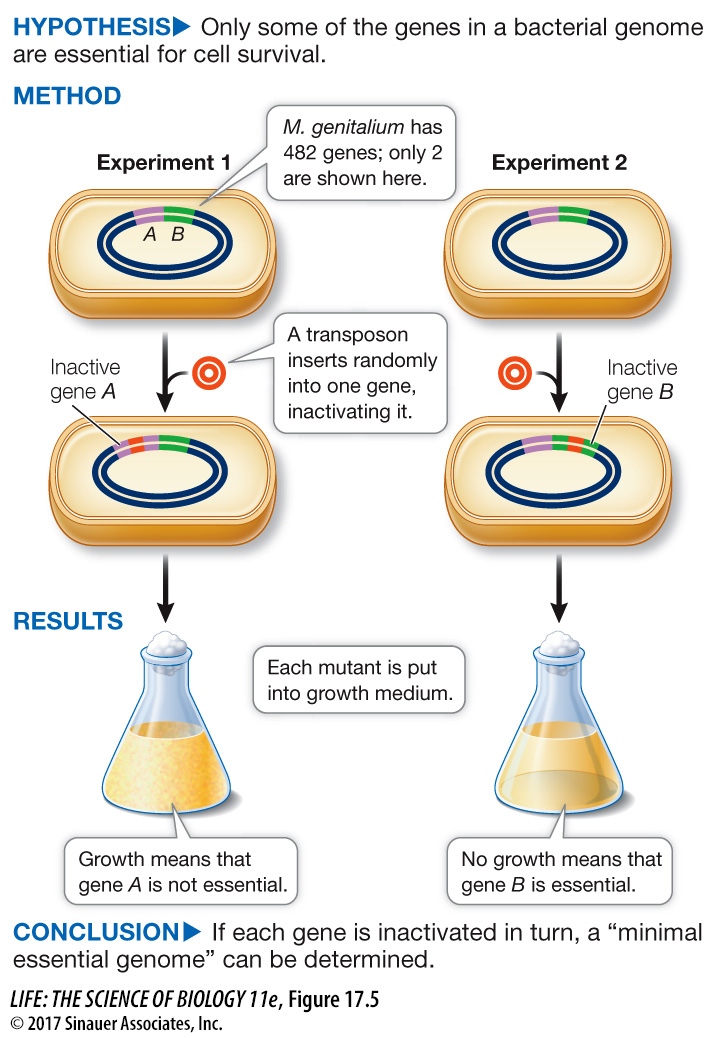Will defining the genes required for cellular life lead to artificial life?
When we compare the genomes of prokaryotes and eukaryotes, a striking conclusion arises: certain genes are present in all organisms (universal genes). Not surprisingly, these include genes whose products are involved in DNA replication, transcription, and RNA translation to form proteins. There are also some (nearly) universal gene segments that are present in many genes in many organisms; for example, the sequence that codes for an ATP binding site in a protein. These findings suggest that there is some ancient, minimal set of DNA sequences that is common to all cells. One way to identify these sequences is to look for them in computer analyses of sequenced genomes.
367
Another way to define the minimal genome is to take an organism with a simple genome and deliberately mutate one gene at a time to see what happens. M. genitalium has one of the smallest known genomes—
What about other genes? A team led by Craig Venter has addressed this question with experiments involving the use of transposons as mutagens. When transposons in the bacterium are activated, they insert themselves into genes at random, mutating and inactivating them (Figure 17.5). The mutated bacteria are tested for growth and survival, and DNA from interesting mutants is sequenced to find out which genes contain transposons. The astonishing result of these studies is that M. genitalium can survive in the laboratory with a minimal genome of only 382 protein-
experiment

Figure 17.5 Using Transposon Mutagenesis to Determine the Minimal Genome
Original papers: Hutchison, C. et al. 1999. Global transposon mutagenesis and a minimal Mycoplasma genome. Science 286: 2165–
Glass, J. I., N. Assad-
Mycoplasma genitalium has one of the smallest known genomes of any prokaryote. But are all of its genes essential to life? By inactivating the genes one by one, scientists determined which of them are essential for the cell’s survival.
One goal of this research is to design new life forms with specific purposes, such as bacteria that will clean up oil spills. You’ll learn about this approach, called synthetic genetics, in the next chapter.